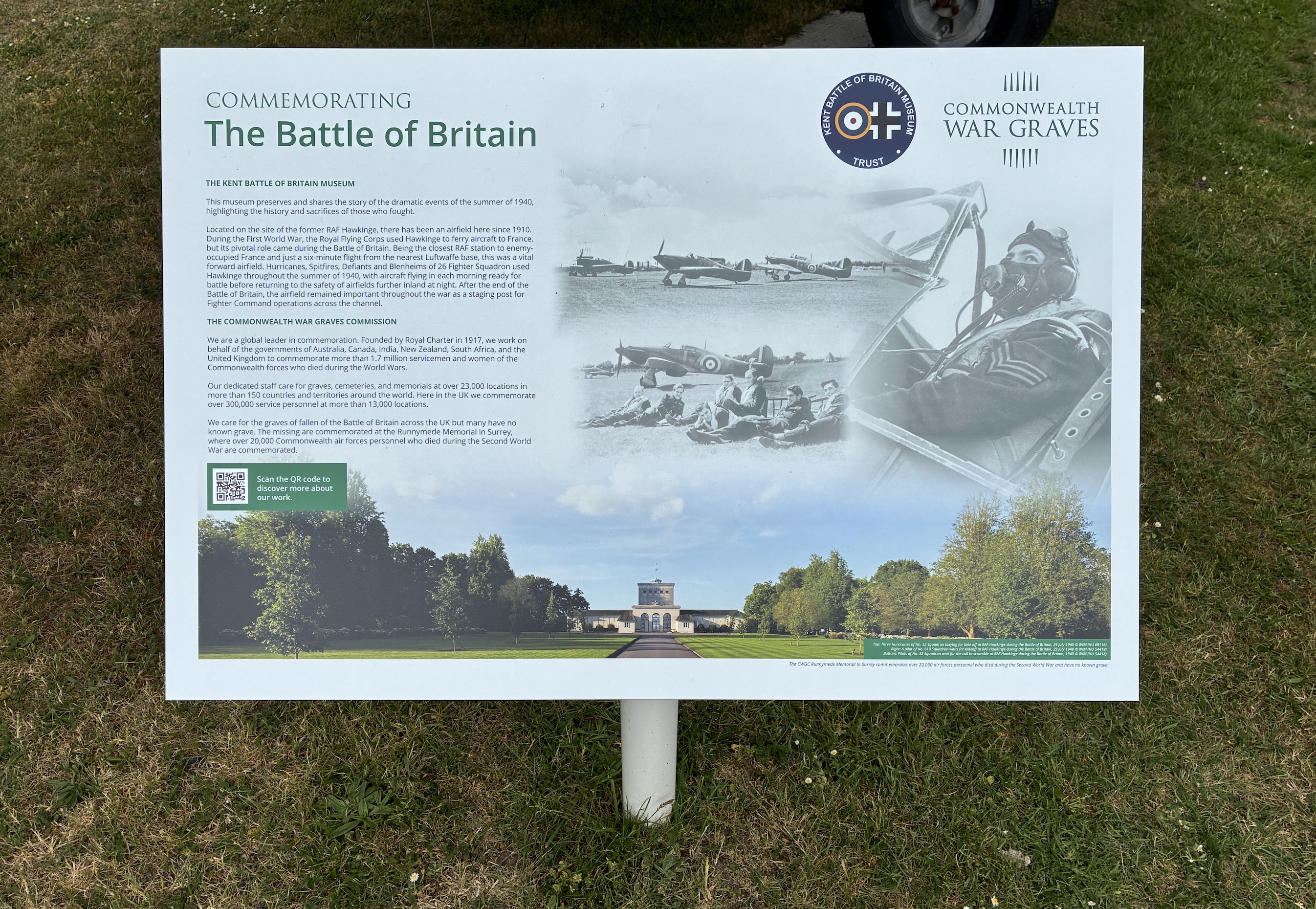
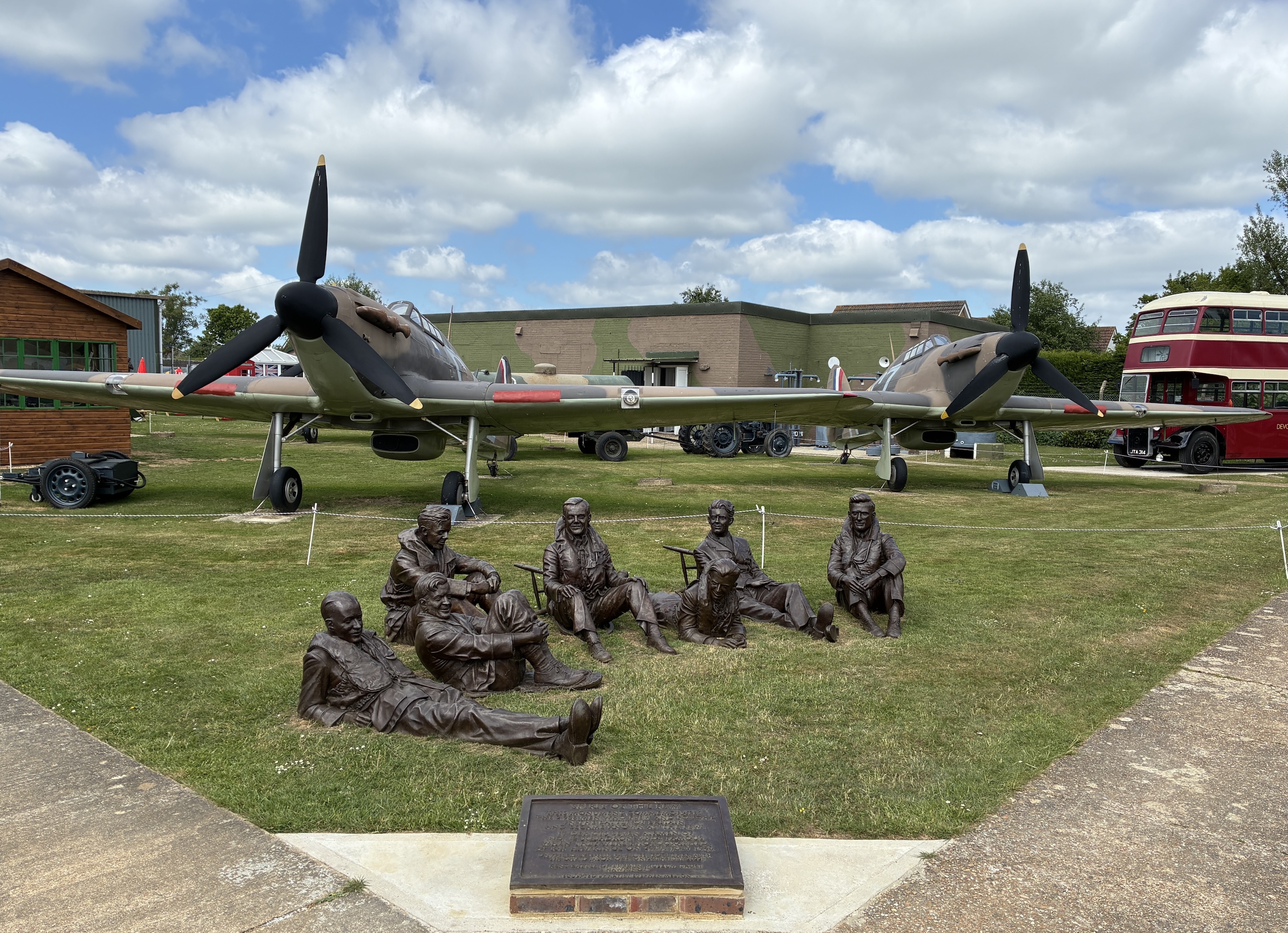
The Kent Battle of Britain Museum in Hawkinge began as a hobby with no thought of establishing what is now the largest collection of Battle of Britain memorabilia from over 700 aircraft. Having been invited to display their finds from scouring the landscape Kent landscape, by 1971 the founders had opened a small museum. That passion that fuelled the search for wreckage and personal stories saw the museum move to Hawkinge airfield and open to the public in 1982. It is now the largest private museum commemorating that summer of 1940 and two of the original half-dozen founders remain involved in the Trust.

As well as being a museum, the site is a memorial and so cameras and mobile phones are not permitted on-site, as some of the artefacts have been retrieved from the bodies of airmen lost during the war and the privacy of them and their families are respected accordingly. Visitors can leave their devices in lockers at the front desk upon arrival.
Aircraft first flew from Hawkinge in January 1910 and it became an airfield for the Royal Flying Corps (RFC) in 1915 and after the Great War, Hawkinge became home to the Royal Air Force’s (RAF) No.25 (F) Squadron. As a satellite airfield of Biggin Hill, it sat on the frontline as Hitler’s war machine drove west through France and to the Channel coast. During the summer of 1940, Hawkinge was home to 26 RAF fighter squadrons.
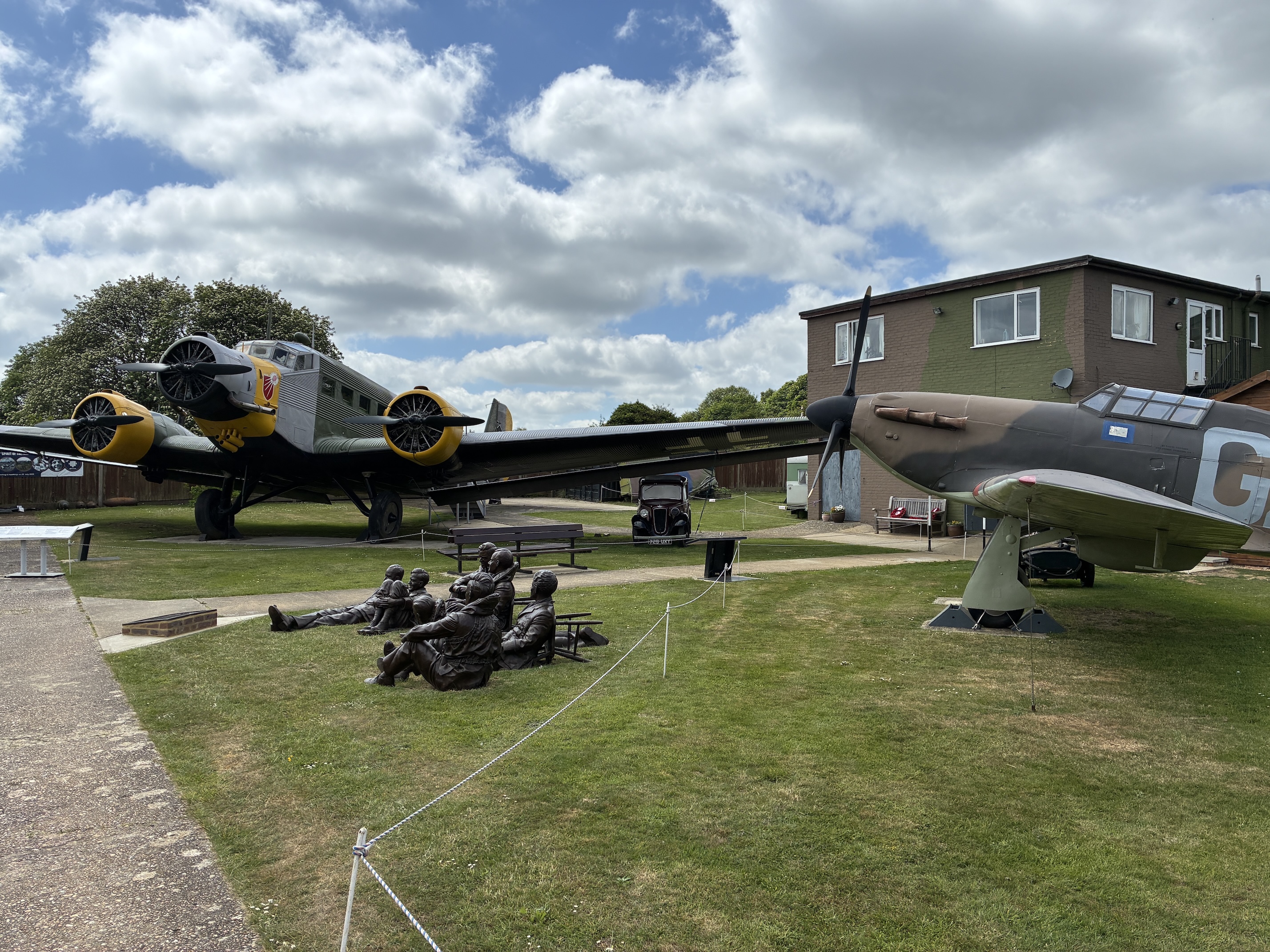
Our stereotypical view of the Battle of Britain will likely conjure up images of Spitfires in dogfights with Messerschmitts over the Kent countryside. However, the Kent Battle of Britain Museum tells the stories of all the British, Commonwealth and Allied squadrons based at Hawkinge and involved in that summer of 1940: Australians, New Zealanders, Canadians, Polish, Czech, Dutch and Belgian. In fact, did you know that Italian pilots flew sorties with the Luftwaffe in late-1940 and into early-1941?
Later in the war, Allied fighter squadrons flew reconnaissance and intruder missions as well as acting as bomber escorts and V1 ‘Doodlebug’ interceptors.
The aerodrome at Hawkinge final closed in December 1961 and was auctioned in 1964.
The museum today is impressive for its collection and also its scale. The Stuart-Buttle Hanger and Lord Dowding Memorial Hanger contain the largest artefacts – aircraft and airfield vehicles – while the Operations Block and Armoury are treasure troves of equipment, maps, uniforms and weapons. There is also a ‘Dig for Victory’ garden with an air raid shelter and a V1 and V2 display.
Taking centre stage in the grounds is the ‘Spirit of the Few’ sculpture (pictured at top), which was commissioned in 2020 and unveiled two years later just 100 metres from where the original photograph of the crew was taken.
‘Spirit of the Few’ plaque:
This monument commemorates the 2,938 men who flew and fought in the Battle of Britain and became known as ‘The Few’. It depicts seven airmen of No.32 Squadron made famous when they were photographed at RAF Hawkinge on 29th July 1940.
To qualify as a member of ‘The Few’ you had to complete at least one authorised operational sortie with an eligible squadron or unit of Fighter Command, or one of the coastal command of Fleet Air Arm squadrons that were seconded to Fighter Command between 10th July and 31st October 1940.
Despite its name, the museum tells the story of Hawkinge throughout its half-century of active service and so one of the most interesting rooms is that which contains the Great War collection and tells the story of the RFC over 100 years ago.
At the end of your visit, you may go back to the central outside areas to take photos whilst accompanied by a member of staff.
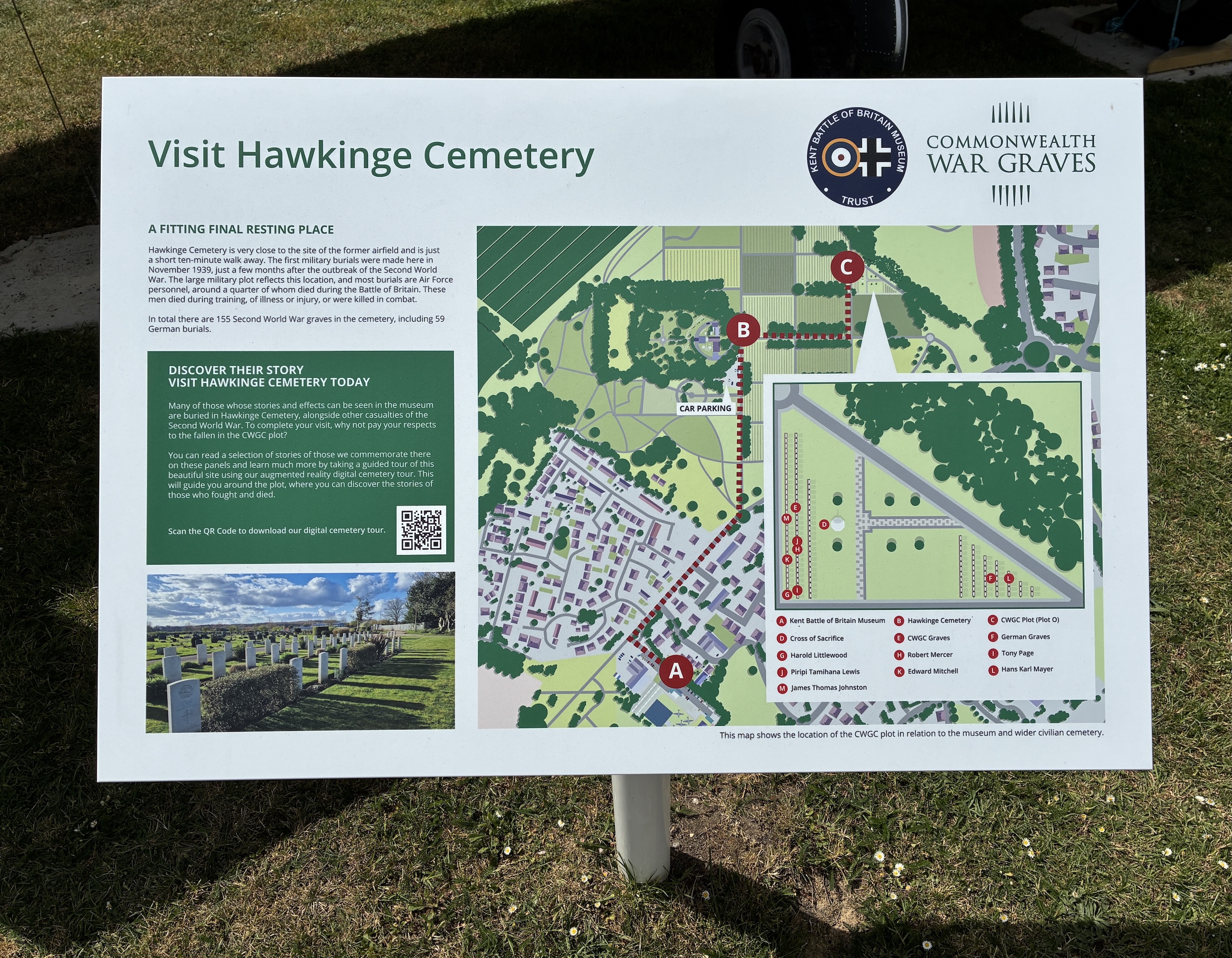
As a memorial too though, the museum invites visitors to also go to Hawkinge Cemetery, just a few minutes away by car. The cemetery includes a plot of land containing Commonwealth War Grave Commission headstones and, strikingly, an area for German airmen shot down over the area. For most, there are named headstones, but one marks the final resting place of ‘Ein Deutscher Soldat’ (a German soldier).
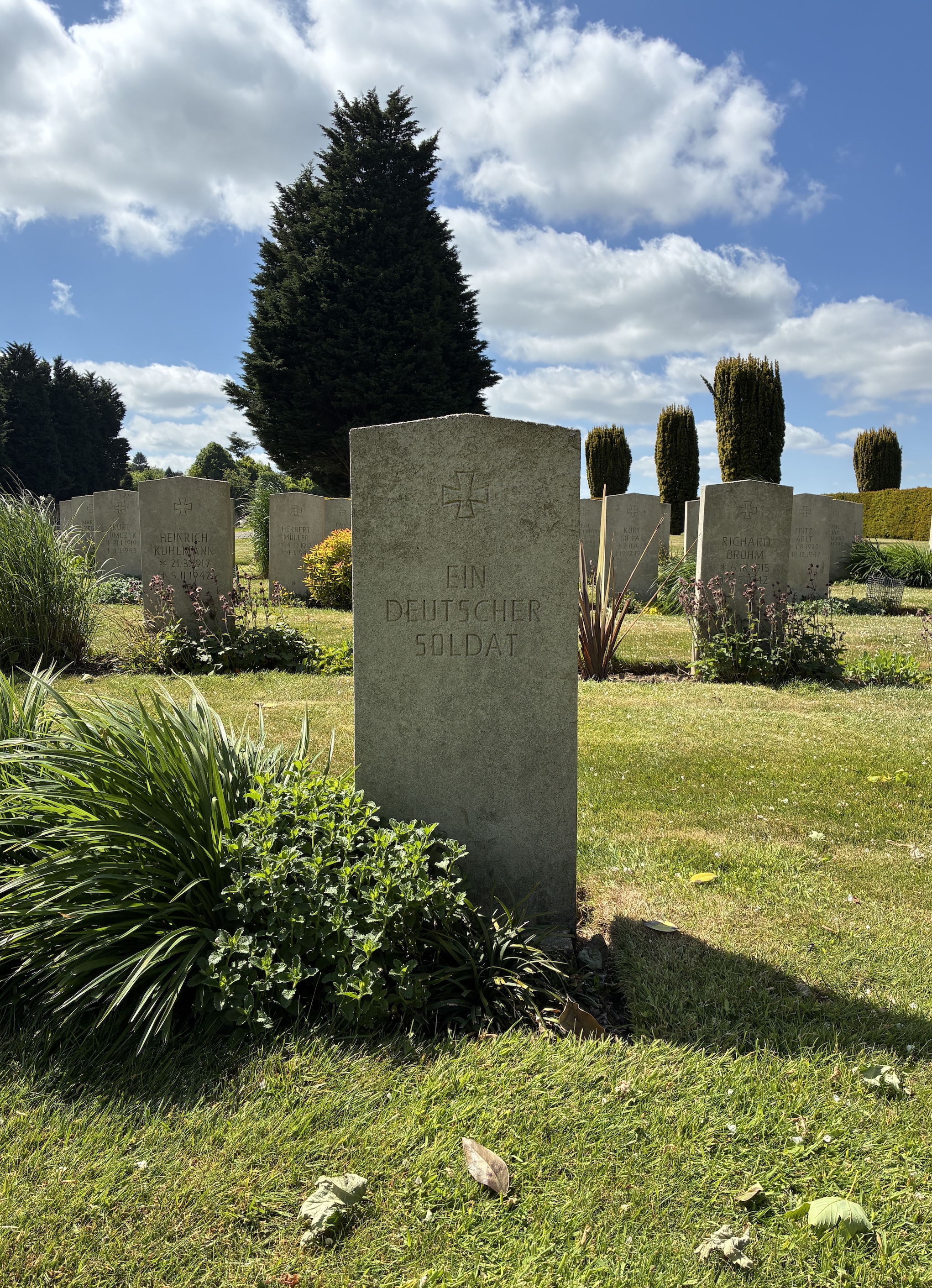
Kent Battle of Britain Museum
Address – Aerodrome Road, Hawkinge, Folkestone, Kent, CT18 7AG, UK
Website – https://www.kbobm.org/
Opening times – Open Tuesday to Sunday: 10am-4pm April, October & November; 10am-5pm May to September, closed December to March
Prices – Adults £12; Children (aged 5-15) £6; Senior citizens £11
Free on-site parking
* * *

David developed an interest in military history in his teens, which led him naturally to War Studies at King’s College, London. His professional life involves delivering data and marketing consultancy across the education sector, and beyond that he was Marketing Officer for the Salisbury Military History Society for five years and has provided support to a range of heritage institutions including the Rifles (Berkshire & Wiltshire) Museum, Royal Artillery Museum and Army Flying Museum. He enjoys exploring new ways to tell stories and engage with audiences.
DCS Heritage on Twitter/X
Salisbury Military History Society
The Rifles (Berkshire & Wiltshire) Museum
Royal Artillery Museum
Army Flying Museum